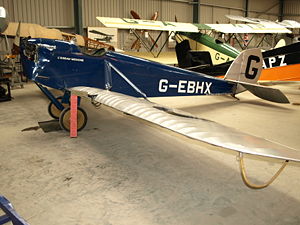| DH.53 Humming Bird | |
|---|---|
 | |
| General information | |
| Type | Ultralight monoplane |
| Manufacturer | de Havilland |
| Primary user | Royal Air Force |
| Number built | 15 |
| History | |
| Manufactured | 1923–1924 |
| First flight | 2 October 1923 [1] |
The de Havilland DH.53 Humming Bird is a British single-seat, single-engine, low-wing monoplane light aircraft first flown in the 1920s.
